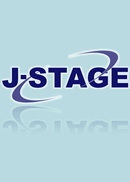10 巻
選択された号の論文の62件中51~62を表示しています
-
1981 年 10 巻 p. 281-285
発行日: 1981年
公開日: 2012/10/29
PDF形式でダウンロード (1512K) -
1981 年 10 巻 p. 286-290
発行日: 1981年
公開日: 2012/10/29
PDF形式でダウンロード (1349K) -
1981 年 10 巻 p. 291-296
発行日: 1981年
公開日: 2012/10/29
PDF形式でダウンロード (2835K) -
1981 年 10 巻 p. 297-300
発行日: 1981年
公開日: 2012/10/29
PDF形式でダウンロード (389K) -
1981 年 10 巻 p. 301-305
発行日: 1981年
公開日: 2012/10/29
PDF形式でダウンロード (1425K) -
1981 年 10 巻 p. 306-312
発行日: 1981年
公開日: 2012/10/29
PDF形式でダウンロード (654K) -
1981 年 10 巻 p. 313-317
発行日: 1981年
公開日: 2012/10/29
PDF形式でダウンロード (1257K) -
1981 年 10 巻 p. 318-322
発行日: 1981年
公開日: 2012/10/29
PDF形式でダウンロード (3331K) -
1981 年 10 巻 p. 323-327
発行日: 1981年
公開日: 2012/10/29
PDF形式でダウンロード (469K) -
1981 年 10 巻 p. 328-333
発行日: 1981年
公開日: 2012/10/29
PDF形式でダウンロード (606K) -
1981 年 10 巻 p. 334-339
発行日: 1981年
公開日: 2012/10/29
PDF形式でダウンロード (769K) -
1981 年 10 巻 p. 340-349
発行日: 1981年
公開日: 2012/10/29
PDF形式でダウンロード (1134K)
